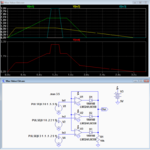flote21
Advanced Member level 1

Hello guys,
I need to build an analog circuit without any uP, FPGA or programmable logic device, to compare to input voltages, and provide to the ouput the maximum one. Anyone can tell me any recommendation to do it?
Thanks in advance for your help!
I need to build an analog circuit without any uP, FPGA or programmable logic device, to compare to input voltages, and provide to the ouput the maximum one. Anyone can tell me any recommendation to do it?
Thanks in advance for your help!






